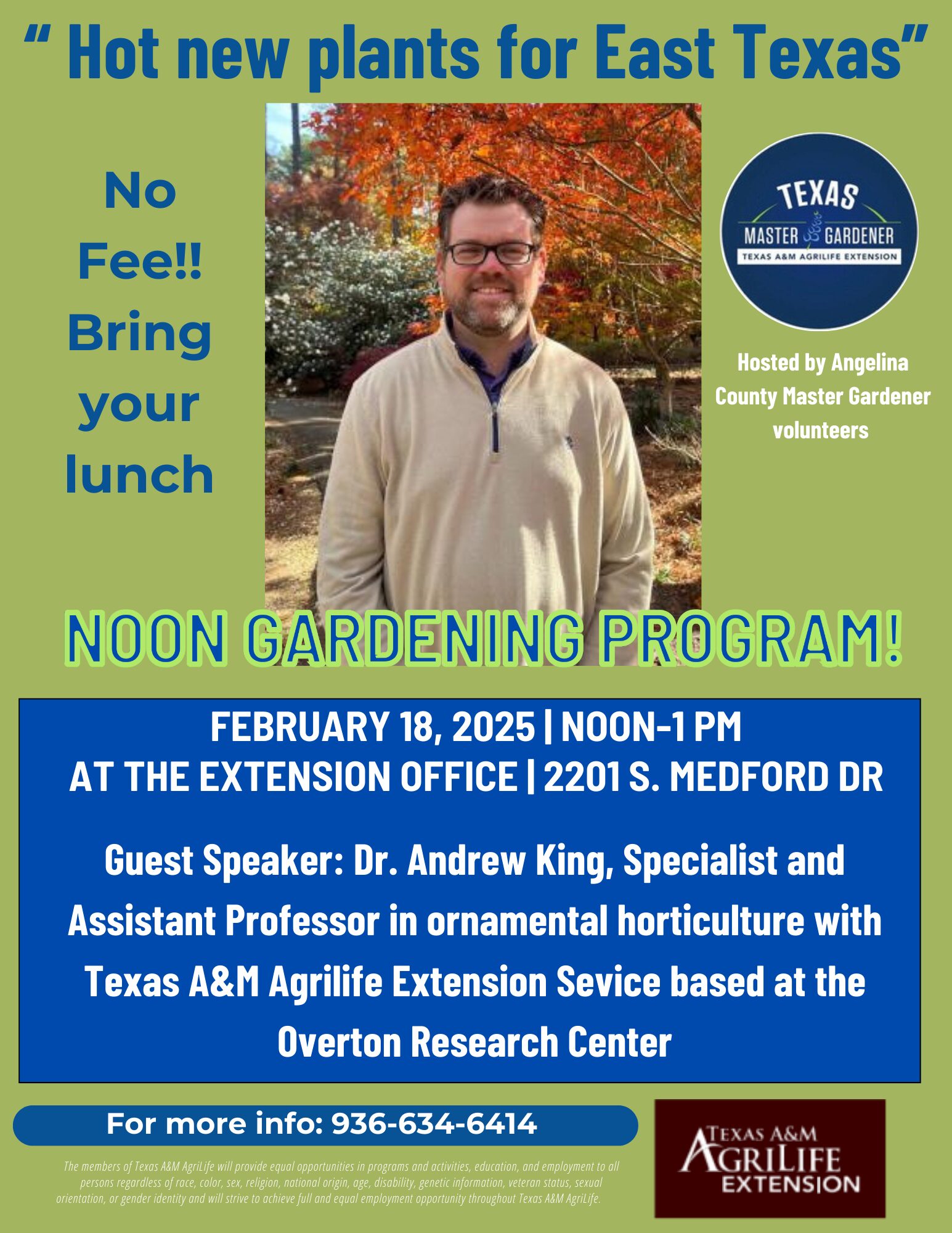The recent, heavy rainfall has brought about a number of folks asking about raised beds. The soppy, wet soil has made if difficult for tractors, lawnmowers, and tilling the soil for a vegetable garden. If you have looked long enough at Pinterest and other online gardening sites, you’ve surely seen some beautiful, raised garden beds.
Raised garden beds are freestanding beds constructed above the natural terrain. Experienced East Texas gardeners have known for years that raised bed gardens can help solve many problems. In many areas of our region, the soil contains too much sand or clay, or is too acidic for some plants to grow well. Soil that is poorly aerated because of compaction or poor drainage also may be a problem.
Much of Angelina County has some clay subsoil on which water can collect. Placing a raised bed above that type of area may just do the job. Getting one foot off the ground can allow the top portion of the soil to dry out and grow the plants that you had wanted.
Additionally, soil quality problems are often aggravated in urban and suburban settings, where topsoil and vegetation have been removed or the grade changed during construction. Raising your beds above the issues found in many soils can make you much more successful at gardening.
Raised bed gardens improve growing conditions for plants by lifting their roots above poor soil. Soil in the beds can be amended to provide a better growing medium for plants, even plants that would not naturally thrive there. The soil in raised beds warms up earlier in the spring and is less apt to be invaded by certain grasses and by tree roots. Also, the height of raised beds may make them easier to maintain.
Before you build your raised bed, be sure to cover the grass underneath the site with several layers of newspapers or, even better, old cardboard. The organic paper material will eventually break down but lasts long enough to smother most vegetation underneath and keeps it away from competing with the new plant material above it.
For the sides of your raised bed, wood is what I think of as the easiest material to use. But I’ve seen well designed concrete, stone and some ready-made plastic. However, if you really want to go old school, use an old tractor tire!
Look closely at some of the commercial plantings around town and you will notice they do the “raised-bed” concept but have skipped putting a wall around the bed. Study some places and you may find a mound of landscaper-mix with roses, ornamental grasses, or other plants planted directly into this mix. Landscapers mix is a common blend that often contains twice ground pine bark, sand, and some mushroom manure mixed together.
This dark, pleasing, ready-to-go soil just needs to be shaped and planted. If you decide to go this route, be sure to provide irrigation as this will drain exceedingly well.
What may be a unique problem for East Texas gardeners (when compared with the rest of the Lone Star State) is our abundance of trees. Far too many times I’ve been called out to give advice on why a garden isn’t doing well, and the issue has been simply too much shade.
Many times, the sunniest site is on the back porch. And a raised bed can be placed on most back porches. I have seen livestock water troughs (both old and new) used wonderfully here. Just be sure to take the plug out of the bottom or find another way to allow for water to drain out.
Bottom line, just get started. Start small. Be reasonable with your expenses and expectations, and let yourself build up to that Pinterest perfect picture.
Be sure to join us on Tuesday, Feb 18 at the Angelina County Extension Office to hear Dr Andrew King, talk about “Hot New Plants for East Texas”. Dr. Kings family has owned and operated Kings Nursery for decades and he is now a Horticultural Specialist with Texas A&M AgriLife Extension. The program is free to the public and is from 12 noon to 1 pm.









